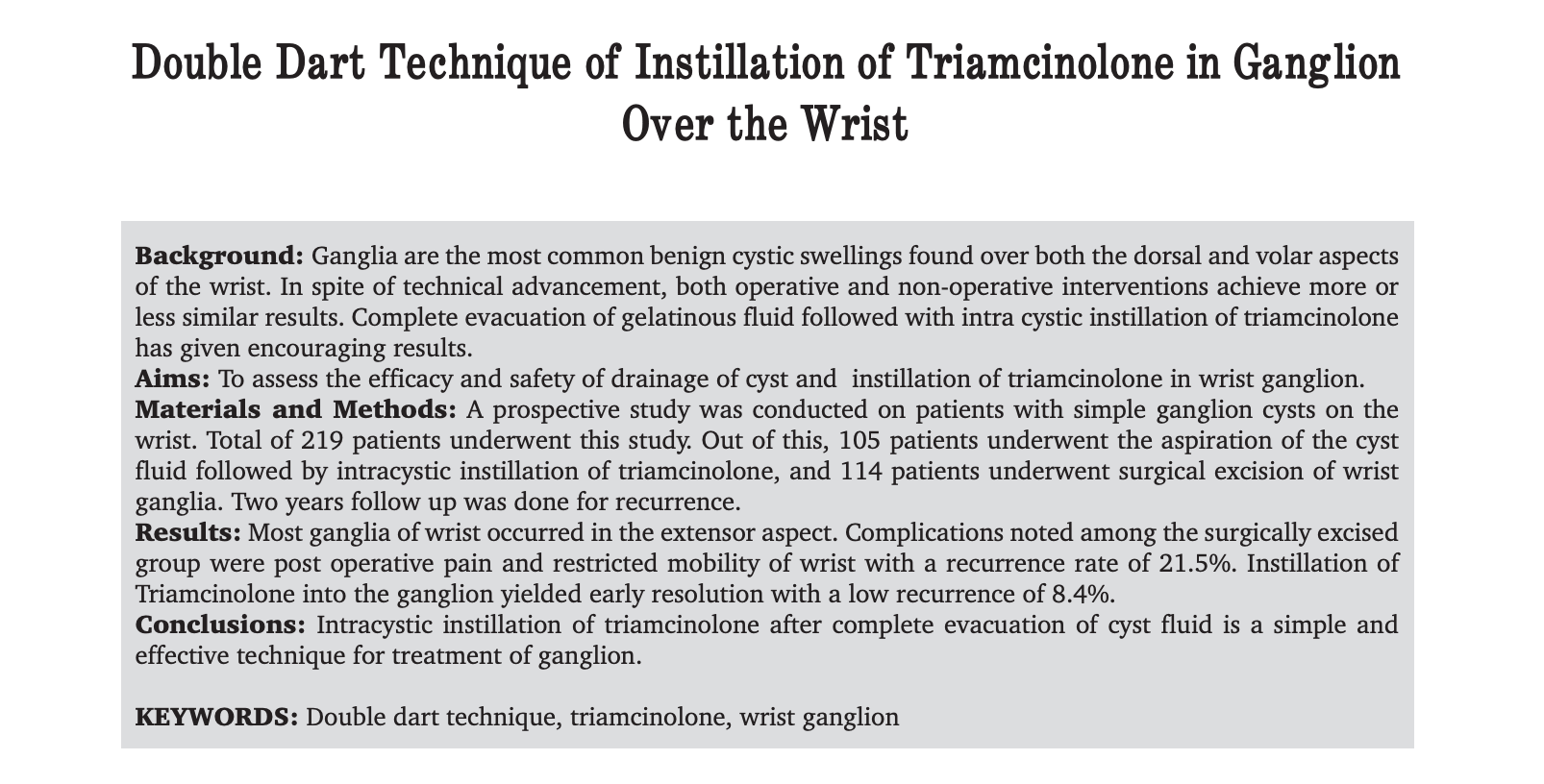
In this Journal Club
Summary
Wrist ganglia, those benign cystic nuisances, have two primary treatments: surgery or aspiration. This study throws a curveball: what if we drain the cyst and follow up with triamcinolone? Over 219 patients, the results were promising, especially for the triamcinolone route.
Deep-Dive Critique
- Methodology: It's a prospective study with a decent sample size, but is it blinded? A longer follow-up might offer more insights.
- Demographics: Most ganglia patients? Women in their 20s and 30s.
- Results: Triamcinolone? Fewer comebacks and side effects. Surgery? Longer recovery and higher recurrence.
Take-Home Points
- Learning Point: Ganglia treatments are evolving. Draining the cyst and adding triamcinolone might be the new kid on the block.
- Clinical Practice: Think twice about surgery. Triamcinolone shows fewer side effects and lower recurrence. Surgery has its merits, but also its downsides like post-op pain and recovery time.
- Further Reading: Interested in a deeper dive into wrist ganglia? Check out this article on hand and wrist ganglion cysts or this systematic review on PubMed.
Article Summary
An independent fresh perspective that can differ from the authors' abstract summary.

Level of Evidence: Prospective Study
Background:
Ganglia? Those benign wrist lumps. They're a common sight on wrists, and guess what? Surgery and non-surgery methods kinda work the same.
Aim:
This study? It's all about seeing if draining the cyst and using triamcinolone beats regular surgery.
Methods:
We had 219 folks with wrist ganglia. Half got the cyst drained and triamcinolone treatment, the other half? Straight-up surgery. We kept an eye on them for two years to see who had a comeback of the ganglion.
Results:
Surgery had its issues: pain, less wrist movement, and 21.5% saw their ganglia return. But the triamcinolone crew? Just 8.4% had a recurrence.
Conclusions:
Empty the cyst, add some triamcinolone, and you've got a neat solution. Fewer comebacks and less hassle than surgery.
Deep Dive
An anlaysis to identify key findings, limitations, clinical practice improvements, and additional reading.
This is for thePlasticsPro
Join the Club to enjoy unlimited access to all of thePlasticsFella.
Join the Club

